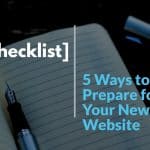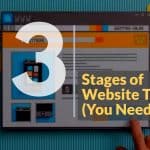Full disclosure: We sell web design, digital marketing, and web maintenance services. We meet with clients who are looking for these services and naturally would like them to choose us.
What SEO (Search Engine Optimization) best practices do you follow?
Google does its best to figure out what your business is and how to display it in search results. A good website, however, will give Google the information they need in the way that they need it. This is by no means a complete list, however, ideal answers to this question should include:
Keyword Research: Your website should be architected around the keywords that your ideal customer will be using to search for what you are offering. Finding those keywords is an art and a science. It starts with a discovery process which will be included in your Canvas 45 Web Design quote.
Site Map: A site map of your website’s pages should be submitted to major search engines in their language. It’s also incredibly helpful to your customers to display sitemap links in the footer of your website.
Menu: Your navigational menu and page hierarchies need to be arranged in a way that will help your ideal customer easily navigate around your site to find what they need.
Meta Descriptions: These need to be written clearly and be page specific. While this doesn’t affect your page ranking on Google, it does affect the probability that web visitors will click it in the search results.
What is your process and how will I be involved as my website is built?
Building a website is a process should incorporate checkpoints. It’s important to know when those checkpoints are and what input or decisions you need to contribute in order to keep the project moving forward. Your potential candidate should be able to tell you what is expected of you (i.e. Will you need to provide images and copy? Or will you need to outsource those items?)
What is your process for testing?
There are many different types of tests that should be conducted during the course of the project.
There is on page testing to ensure that links and buttons work, the web copy is proofed – again, and that the site looks good on all modern browsers and mobile devices.
Then there is user testing. User experience is very important. Asking someone who isn’t familiar with the site to look through it and uncover areas where they find it difficult to navigate.
Finally, after the site is live, you can fine tune it with A/B Testing to see which version your website visitors respond in a better way. We have a blog that explains this in detail: The 3 Stages of Testing Web Design.
Can I edit the website myself? Or just certain parts?
The best answer to this should be a question – “what and how often will you want to make changes?” Also, how comfortable are you with learning a new system? Depending on your answer, we can set it up any way you want. If you want to make changes to your site, then a great follow up question is “how will you train me and will you be available to support me if I need help?”
Asking these questions can help you quickly gage the type of project experience you will have and will guide you in your quest to hire someone with a good fit for your business or organization. Please leave a comment below or contact us directly.










